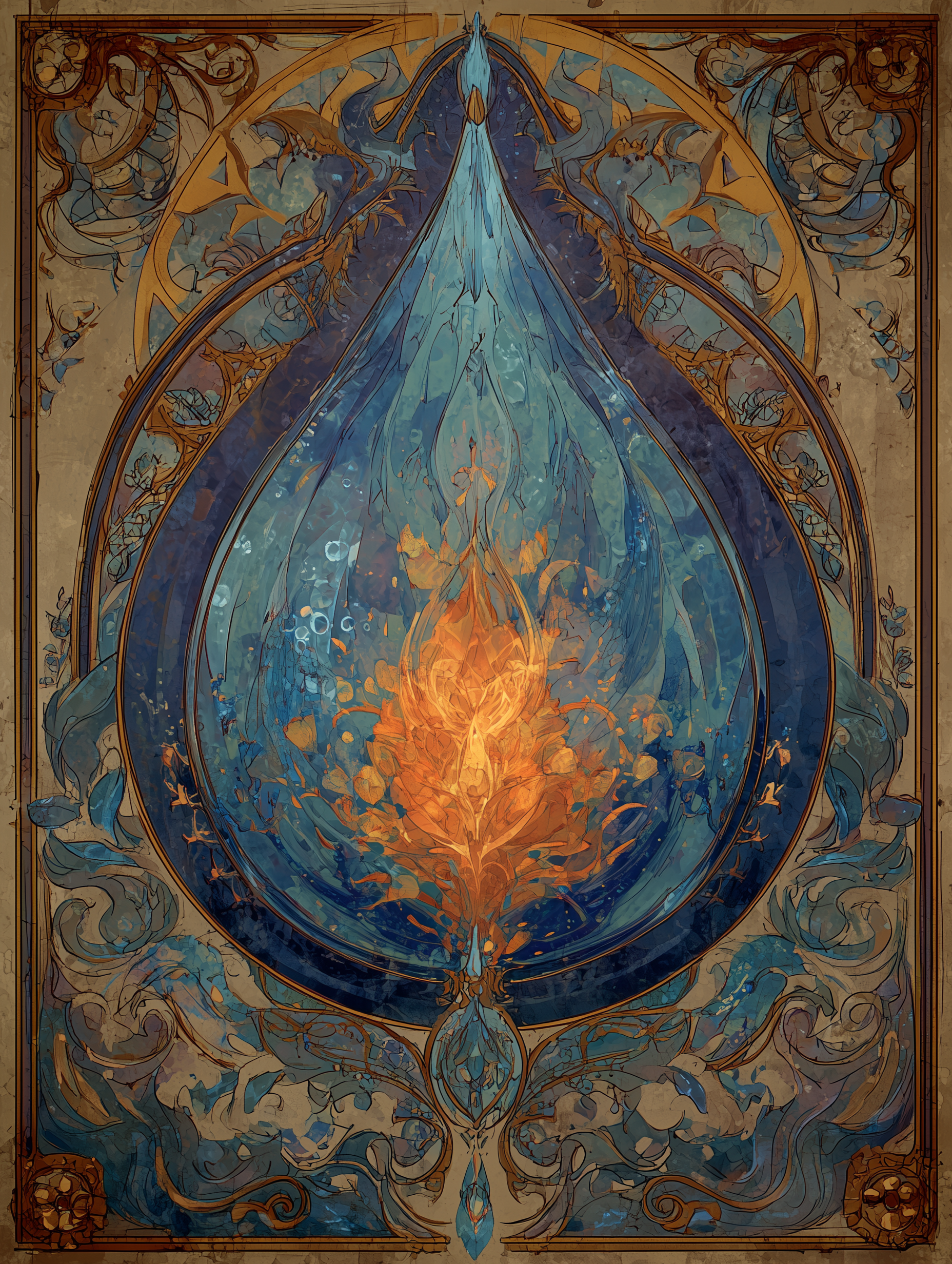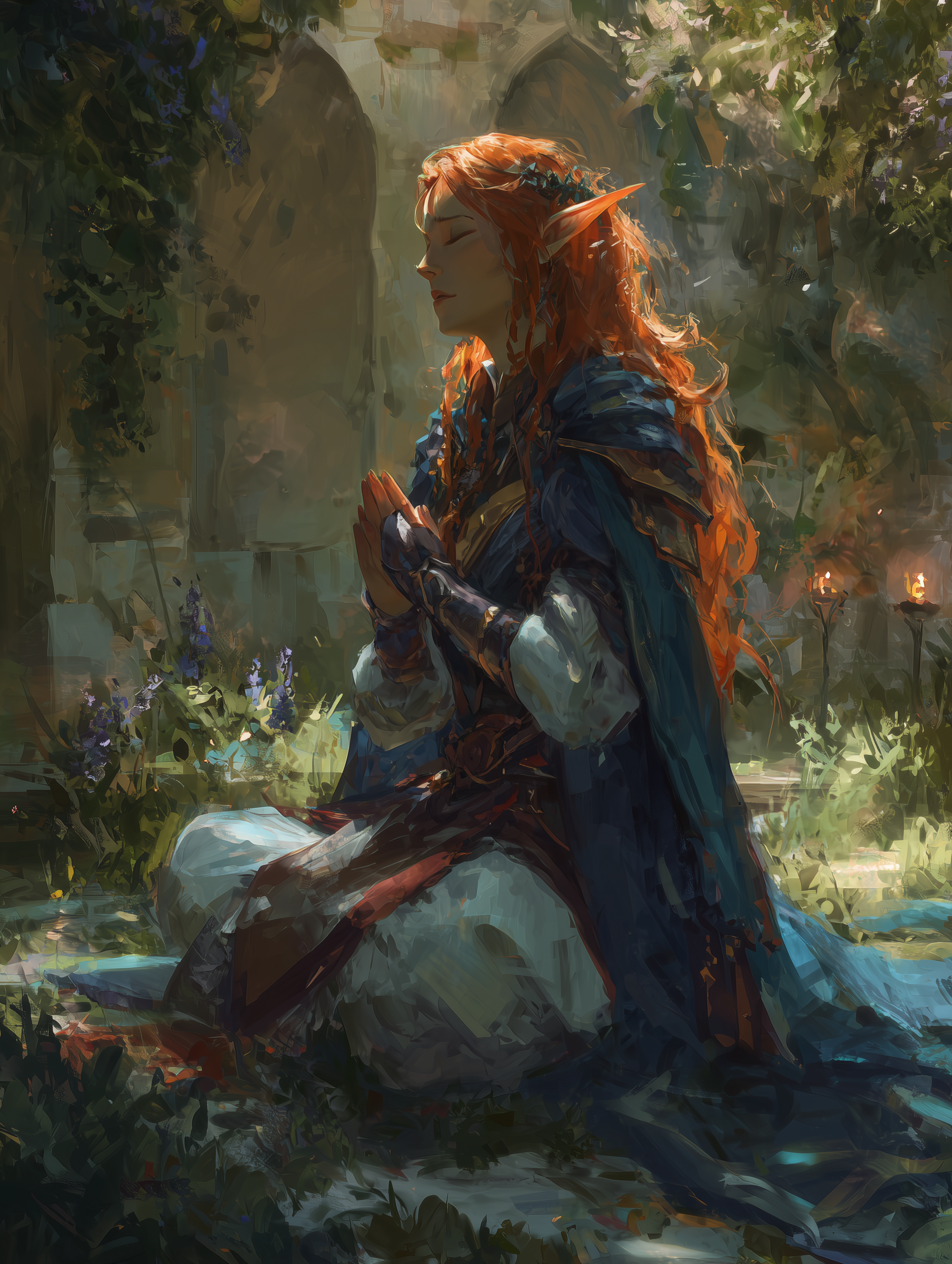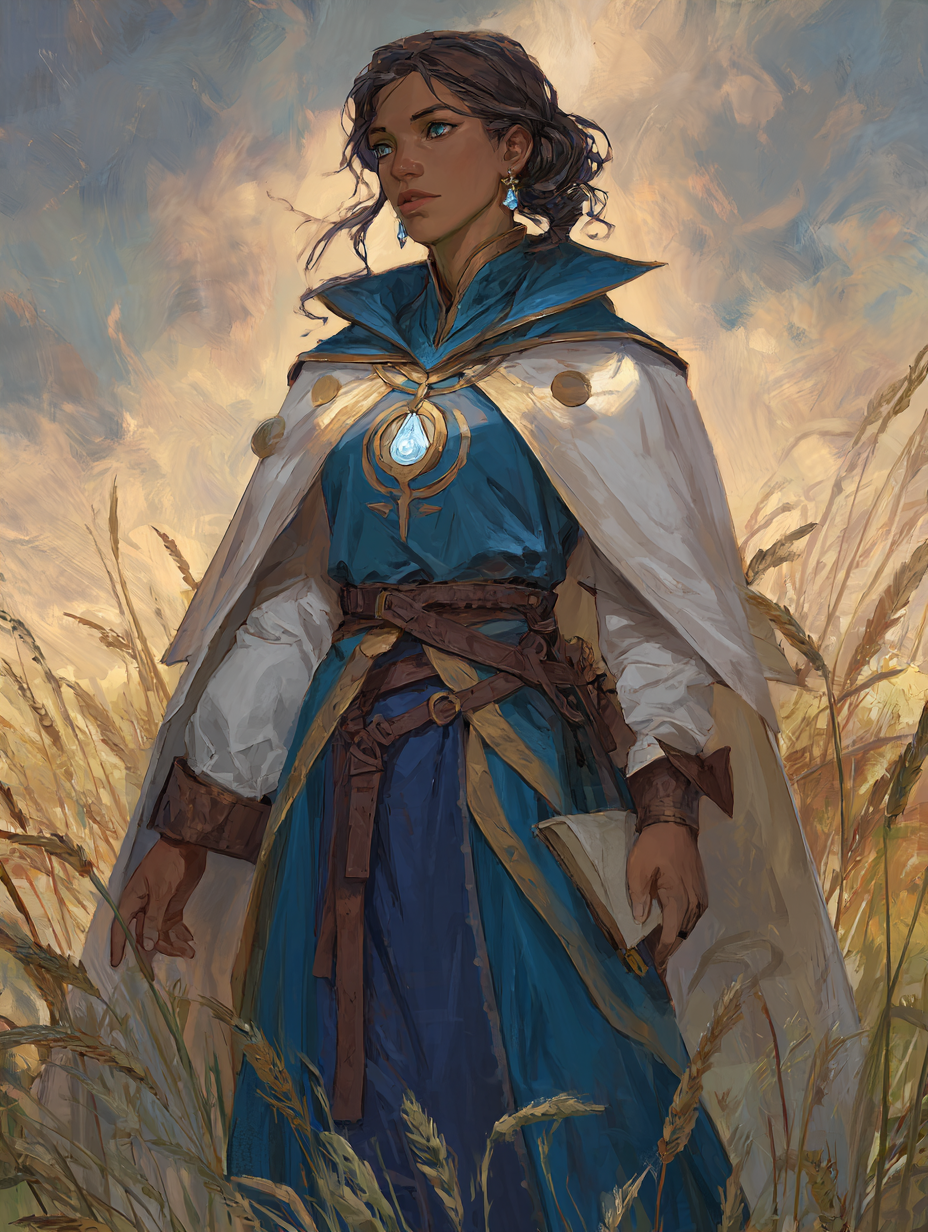Tenders
"Tenders" is the common nickname for the primary followers of the goddess Mera. Their formal name is "Tenders of the Sacred Hearth", because, among other things, Mera is the goddess of the hearth, and most Mera temples keep a sacred hearth burning 24/7.
Some detractors say that Mera's followers (or Mera herself) are overly sensitive and have easily bruised tender hearts, so "Tender" can be a compliment or a slur deepening on inflection and context.
Structure
Mera's Tenders have a global culture and many shared values, but they don't have anything approximating a global power structure. Political power among Mera's faithful is almost always regional based.
Mera's temples are all autonomous and the head priest or priestess has a lot of authority to interpret religious doctrine and make political decisions. Associations and alliances between different Mera temples usually begins and ends at national boundaries. This means sometime Tenders can end up at odds with each other if their respective home nations are at odds though Tender on Tender violence is extremely rare.
Culture
The Mera is strongly associated with the color blue, so it is no surprise that the Tenders buy a lot of blue paint and blue dye, so the Tenders commonly sport blue temples, blue relics, blue armor and shields, blue vestments, and blue ritual tools. White and orange are common secondary colors.
 Mera encourages her followers to show kindness, charity, and compassion. Usually, Tenders embody these traits, but they aren’t all saints and even a good person can have a bad day. Tenders often hide their selfishness and darker personality traits under a mask of civility and politeness. Tenders are well known for being petty and passive aggressive when angry.
Like every other major religious group in Scarterra, there are numerous internal disagreements in dogma and politics, but the Tenders try to present a unified front to outsiders. Their disagreements and inner struggles are often buried under politeness and decorum as they “agree to disagree”.
Mera encourages her followers to show kindness, charity, and compassion. Usually, Tenders embody these traits, but they aren’t all saints and even a good person can have a bad day. Tenders often hide their selfishness and darker personality traits under a mask of civility and politeness. Tenders are well known for being petty and passive aggressive when angry.
Like every other major religious group in Scarterra, there are numerous internal disagreements in dogma and politics, but the Tenders try to present a unified front to outsiders. Their disagreements and inner struggles are often buried under politeness and decorum as they “agree to disagree”.

Gnomeling and Geu-puppy by Zeta Gardner
Mera temples like to symbolically associate with animals known for their gentleness and attentive parenting. Many Tenders claim that dogs are living avatar's of Mera's love.
Dog artwork is common in many Mera temples as are actual tail-wagging living dogs. Some spirits take the physical forms of dogs, mostly the Watch Dogs, dogs statues that are said to come to life if a temple is threatened.
Geu-Puppies toys are said to be original ideas first developed by ancient Tenders and many Scarterran parents put tiny Mera charms into the stuffing of their children's geu-puppies, so Mera can watch over them.
Public Agenda
To ensure that Mera receives her proper worship and that Mera's blessings are shared far and wide across the entire face of Scarterra.
Assets
Relative to the rest of the Nine, Mera has an above average number of temples. In most human lands, Mera temples and Korus are first and second place in terms of numbers though it's a coin flip which deity has more temples.
To supplement their donations, Tenders they often sell so called "temple cheese" to raise extra funds. Frequently, the "cheese" is not food, but medical care since so many Tenders have medical training. Most healers are more than happy to heal people for fee, that doesn't mean they won't shake the collection plate under the nose of someone they just treated.
Mera temples are numerous, but they are seldom especially large or ornate. Most Mera temples receive a steady stream of small-scale donations from the general populace, but their resources are often stretched thin, Mera temples tend to maintain large standing staffs these people all need to be housed, clothed, and fed. Mera temples often sponsor a large number of charitable endeavors including but not limited to hospitals, orphanages, and soup kitchens. All these things eat up resources.
Demography and Population
Nomadic Scarterrans tend to view Mera worship as important as a very important goddess, though agrarian Scarterrans tend to place a comparatively greater importance on Mera worship. Most nomadic Mera worshipers don’t maintain regular contact, with temple-bound Mera worshipers, and they more often than not use the title “Tenders”.
Scarterran humans are a diverse lot, but the majority of Scarterran humans worship Mera often in their home. Tenders and Mera-aligned temples are common sights in most human lands.
Most kalazotz view Mera as the most important deity among the Nine though because of the kalazotz centuries of isolations, their Mera veneration practices are very foreign to most Tenders. They certainly venerate Mera as a goddess of community and family harmony, but they put much put weight in the notion of a goddess of the hearth since they can see in the dark and eat most of their food raw.
Kalazotz Mera priests and priestesses have only recently begun reaching out to their spiritual cousins among the non-flyers, but these meetings usually go well because Mera charges her followers to bridge gaps in race and culture.
Wood elves worship and honor Mera as an important goddess, but the wood elves have been living in their own cultural bubble for many centuries, so their Mera worship traditions holds very little in common with that of most non-elves.
The dark elves are in a similar boat living in a cultural bubble, but since most dark elves view Greymoria as their patron deity and Greymoria and Mera are rivals, most dark elves reluctantly worship Mera with their noses plugged, if even then.
Very few Scarterrans actively shun Mera worship, but Mera worship is generally much stronger among the lower classes than the upper classes, so most of the Tenders' priests, priestesses, theurgists and holy warriors are of lowly birth.
Gnomes often assimilate the religious values of their non-gnome neighbors, but when left to their own devices, most gnomes adopt a very Mera-friendly viewpoint. Most gnomes believe that Mera created their little race to be her ambassadors for peace across all of Scarterra. Gnomes are disproportionally represented in almost every Tender temple and sect.
Satyrs generally put more weight on found families than blood families, but this is not a problem for most Tenders, Mera is said to cherish both types of families. Satyrs are fairly well-represented among Tender enclaves. The herd known as "fauns" place an even higher importance on Mera worship than the average satyr.
Most dwarves acknowledge and honor Mera, but put less emphasis on Mera worship than other Scarterran groups and often favor infrequent large public rituals in Mera’s honor instead of frequent private family rituals in Mera’s honor. The major exception being the Mondarian dwarves who hold Mera as their preeminent divine protector.
In Meckelorn, the increasingly important alliance between the dwarves is causing some of the kalazotz's love of Mera to rub off on their dwarf friends.
There are very few things that gnomes and humans do that grey elves don't claim that their ancestors didn't do first. They claim the famous Mera theologians Walcha and Tarwa were ancient grey elves. Whether or not this is true, grey elf Tenders have very similar traditions, rituals, and style of dress comparable to gnomish and human Tenders.
Grey elves have a reputation for being elitist snobs, but grey elf Tenders tend to be more humble and accepting than the average elf. Mera temples in the Elven Empire don't segregate humans and elves like their secular society often does.
Foreign Relations
Most Tenders focus on trying to sway the masses rather than trying to influence kings and queens, but they have political weight because the rich and powerful know that alienating the Tenders can lead to civil disobedience from their peasantry. The Tenders seldom get to sit on the advisory councils of princes and potentates, but the rich and powerful still try to court the favor of the Tenders, if for no other reason than so they can shore up their "Man of the People" or "family values" credentials.
Mera is said to get along best with Korus, Hallisan, and Zarthus. Mera is a staunch enemy with Greymoria and Maylar and is not strictly an enemy but dislikes Phidas. She is fairly ambivalent to Nami and Khemra.
Mera's Tenders roughly mirror these interactions when they interact with the followers of the rest of the Nine, but they are a bit flexible. The Tenders will work with almost any person or group to advance charitable endeavors, even their traditional rivals.
Education
Every clerical faction in Scarterra teaches their clergy and perspective clergy in extensive ritual knowledge and the Tenders are no exception in this regard.
Practical skills are always valued. Above all other practical skill, the Tenders value knowledge of the healing arts, not too surprising for worshipers of the Goddess of Medicine. Knowledge of non-magical healing makes magical healing stronger and it gives the Tenders non-theurgist a means to contribute. Routine problems are treated non-magically, and magical healers are kept on standby for more urgent or serious problems.
Whether they are clergy or not, many Scarterran physicians, midwives, apothecaries, battlefield surgeons, and other healers are at least partially trained by Tenders.
Ethics
Tender leaders commonly encourage their members to be humble, charitable, polite and accepting.
Worship
Mera is the goddess of both water and hearth fires. Holy water and holy embers are common parts of many Mera veneration rituals.
Mera is prayed to for safe drinking water, safe sea voyages, family and community harmony, safe childbirth, and general health and welfare.
Most weddings and baptism invoke several of the Nine's blessings, but Mera is the preeminent goddess marriage and the preeminent goddess for baptizing babies.
Relative to the rest of the Nine, Mera's types of veneration rituals tends towards the small personal end of the spectrum rather than the grandiose. Small intimate household rituals are quite common and large scale nation-wide rituals and festivals are relatively uncommon, but most places have at least two or three large scale Mera rituals per year, and some places have a lot more than that.
Granted Divine Powers
Like with most religious orders, a majority of the priests, priestesses, holy warriors, and support clergy are not theurgists, but their theurgists are held in high regard and often sought out by the general populace. Mera-aligned theurgists manifest a wide array of powers but they are best known for their healing prowess.
Because Mera worship is so popular with the general populace, Mera has more "self-taught" anointed theurgists than most if not all of the rest of the Nine. Mera's temples are more than happy to induct these blessed individuals into their ranks.
Political Influence & Intrigue
Among the human nations, Mera is usually among the most beloved of all the Nine. Mera’s Tenders and spirits commonly provide healing, protection, food, warmth, and sage advice without asking anything in return.
Sometimes this hurts their influence because some Scarterran peasants and princes alike figure that Mera's love is unconditional, so they won't be punished for forsaking her. This means more time, money and is energy is put towards appeasing less benevolent deities.
That being said, it's wise to shun any of the Nine, and many Scarterrans believe that Mera's Curse is very real, or at the very least, the Tenders can cut them off from their aid. Wise peasants and princes will try to stay on the Tenders good side.
For their part, most Tenders rarely interfere with princes and potentates as long as those in power give the Tenders freedom of movement to help people as they see fit. Most Scarterran rulers are all too happy to give them this freedom of movement and make it a point to praise the priesthood of Mera publicly to show off in front of their subjects.
That doesn't mean Tenders never play politics, but when they do, they usually try to be fairly subtle about it.
Sects
Centuries ago, the Terrawans and Walchese were two competing Tender barely spoke together despite worshiping the same goddess. This schism have softened considerably over the centuries. Now it's common to say that a particular temple or a particular priest leans Walchese or leans Terrawan but very few clergy or temples declare themselves fully one or the other.
The Terrawans and Walchese disagree on many finer points of dogma but the main difference is the Terrawans are fairly informal and the Walchese are fairly formal.
The Terrawans favor maintaining many small relatively modest temples, and modest vestments. Most Terrawan Tenders maintain a second job, and the Terrawans give out honorary priest titles to pious individuals often. Priestly rank is determined by primarily by years of service. They strongly encourage their priests and priestesses to marry and have children.
The Walchese favor maintaining a small number of large ornate temples with a staff of full-time priests and priestesses. They give out honorary priestly titles only rarely. Priestly rank is primarily determined by power and prestige with the vast majority of ranking members being theurgists. They strongly encourage their priests and priestesses to remain celibate.
Ideological Tender divisions
Most Tenders are generalists, but some specialists have emerged over the centuries focusing on specific aspects of Mera's divine portfolio. The Firebringers claim to pre-date the Terrawan/Walchese divide. They are a loose association of holy warriors dedicated to Mera's services. Tenders have a reputation for being pacifists, and the Firebringers are certainly not pacifists, but they fight with chivalry and honor, always showing mercy and restraint when feasible.Geographic Sects
Despite claiming to steer clear of secular politics, many temple jurisdiction begin and end at national borders. Here are some examples or regional-based Tender organizations.
Type
Religious, Organised Religion
Subsidiary Organizations
Permeated Organizations
Deities
Divines
Location
Related Traditions
- Hearth Day
- Hearth Lighting Ceremonies
- How do Scarterrans rank magic users?
- How most Scarterrans get their drinking water
- How mundane and magical healers interact and relate to each other
- How ordinary mortals worship the Nine
- Mera's Dawn
- Mera's Solace
- Mera's Zenith
- Proper Scarterran Wedding Attire doesn't resemble modern Earth wedding attire
- Thinking Medieval with a Twist: Healing as a tool of punishment
- Thinking Medieval with a Twist: Lunar Apprenticeships
- Thinking medieval with a twist: Temple Cheese
Related Ranks & Titles
Related Professions
Controlled Territories
Related Items
Notable Members









Comments